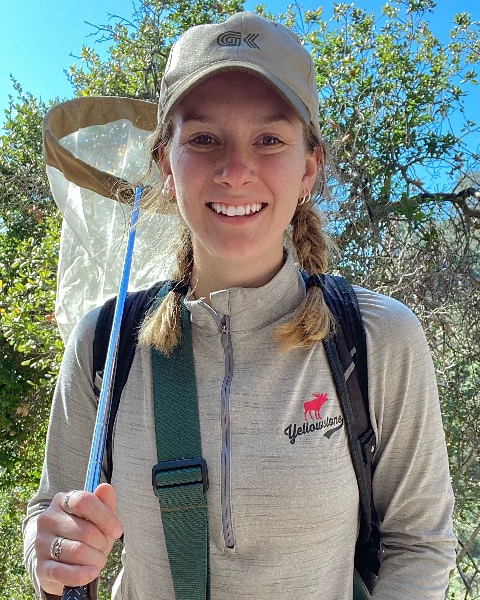Member Symposium
Plant-Insect Ecosystems
Early Career
Student
A Multi-Faceted Exploration of Bee Symbioses in the Wake of Global Change
The impact of an invasive parasite on blue orchard bees (Osmia lignaria)
Tuesday, November 11, 2025
2:22 PM - 2:42 PM Pacific
Location: Oregon Convention Center, D139-140, OCC

Abigail Lehner
PhD Candidate
University of California
Davis, California
Neal M. Williams
Professor of Entomology
University of California
Stony Brook, New York
Presenting Author(s)
Co-Author(s)
The introduction of non-native species poses major risks in agriculture, with hundreds of new alien species recorded annually. Most efforts to understand the risks and effects of non-native species have focused on mitigating the impact of invasive crop pests. However, non-native species can also affect critical services and the organisms providing them. For example, honey bee (Apis mellifera) declines caused by Varroa mites have led to significant crop losses and increased management costs for beekeepers. Houdini flies (Cacoxenus indagator) were recently introduced to the United States and parasitize cavity-nesting native bees, including the blue orchard bee (Osmia lignaria), a managed solitary bee used to pollinate spring orchard trees. The introduction of Houdini flies poses an existential threat to the stability of the solitary bee industry, the livelihoods of orchard managers, and to native bee population persistence. We have monitored parasitism rates at blue orchard bee nest blocks in Washington, Oregon, and California over three years to understand temporal patterns and long-term impacts of Houdini fly parasitism. We found the Houdini fly to be widespread in western Washington and Oregon, but not yet introduced in California. Eighty-eight percent of sites experienced increased parasitism by Houdini flies from 2023 to 2024. Additionally, we complimented our longitudinal field monitoring with a large scale participatory science dataset to map Houdini fly distribution across North America. Overall, this research will inform commercial management and conservation strategies for cavity-nesting bees.
.png)
